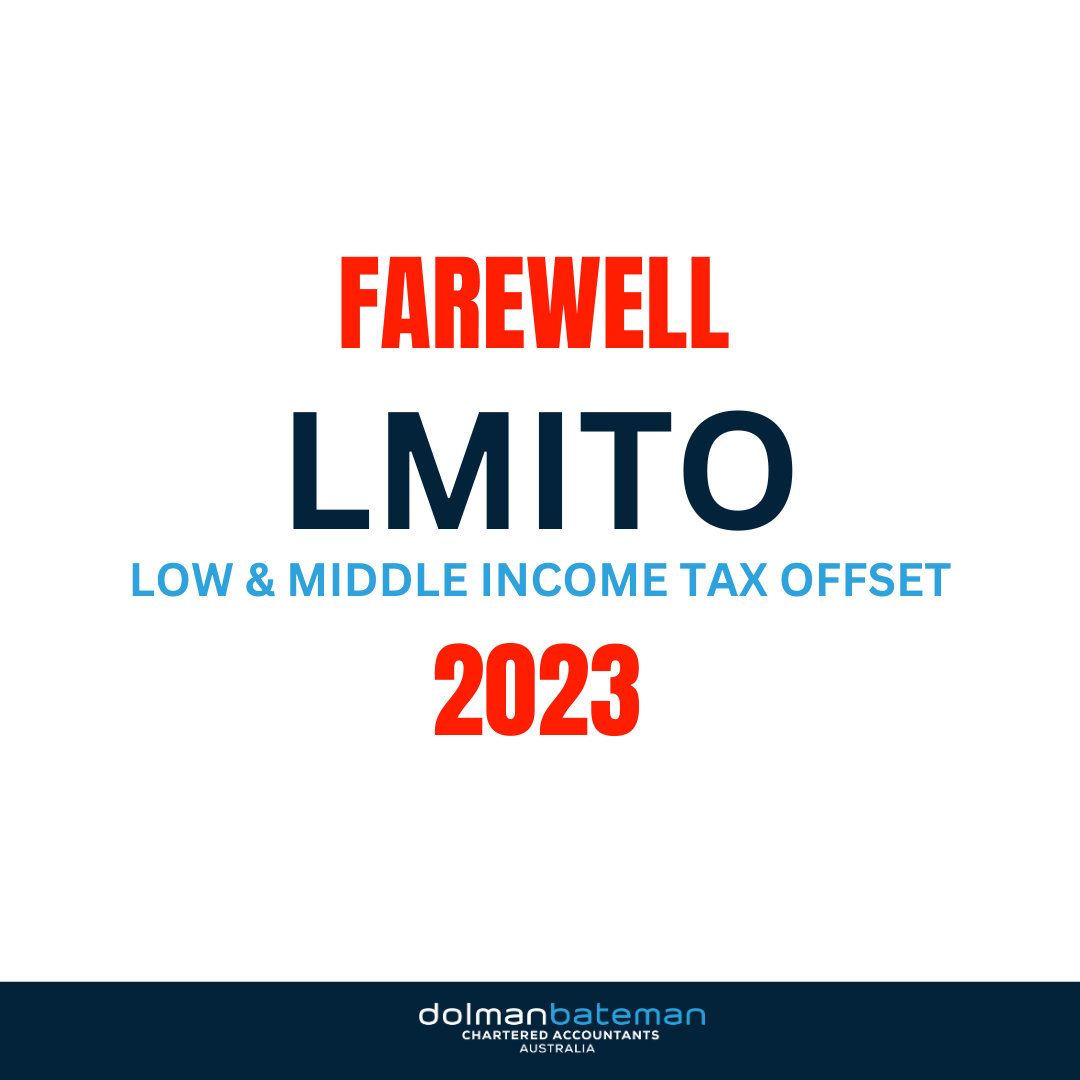Tax return time always brings mixed emotions - a bit of dread and excitement. Of course, there’s...
Farewell to the Low & Middle Income Tax Offset (LMITO)

Australians have become familiar with the term "LMITO" or Low & Middle Income Tax Offset. This tax offset was introduced as a temporary measure to provide tax relief to low and middle-income earners, but as we step into 2023, it is time to bid farewell to this financial benefit.
The Low & Middle Income Tax Offset (LMITO) was a tax rebate introduced by the Australian government in the 2018-2019 budget. It was designed to provide immediate tax relief for individuals earning between $48,000 and $90,000 per year. LMITO was initially introduced as a temporary measure to provide financial assistance to Australians during a challenging economic period.
The Purpose of LMITO
The primary goal of LMITO was to stimulate economic growth by putting more money into the pockets of low and middle-income Australians. By reducing the tax burden for individuals in this income bracket, the government aimed to encourage spending, boost consumer confidence, and support economic recovery. It was seen as a way to help ease the financial pressure on households and stimulate demand in the economy.
The Impact of LMITO
LMITO had a positive impact on the finances of many Australians. It provided a maximum offset of $1,080 for individuals earning between $48,000 and $90,000 per year. For those earning less than $48,000, the offset gradually decreased, offering some relief to individuals on lower incomes as well.
The removal of LMITO means that taxpayers in the specified income bracket will see a reduction in their take-home pay, as they will now be subject to higher tax rates. This change could have significant implications for the disposable income of many Australians.
What Does the Removal of LMITO Mean?
As of July 1, 2023, LMITO was phased out. This means that the temporary tax relief it provided is no longer available. Instead, taxpayers in the affected income bracket will revert to the tax rates that were in place before LMITO was introduced. Consequently, they may see an increase in their annual tax liabilities and a decrease in their disposable income.
It's essential to note that the removal of LMITO coincided with other changes to tax brackets and thresholds, which may also impact individuals' tax obligations.
While the removal of LMITO may result in increased tax liabilities for some individuals, it's important to remember that taxation is a complex and evolving area. Staying informed about changes to tax laws and seeking advice from tax professionals can help individuals navigate these changes and ensure they are managing their finances effectively in the post-LMITO era. As we bid farewell to LMITO, it's a reminder of the dynamic nature of tax policy and the importance of staying informed about financial matters. This blog has been prepared for the purposes of general information and guidance only. It should not be used for specific advice or used for formulating decisions under any circumstances. If you would like specific advice about your own personal circumstances, please feel free to contact us on 02 9411 5422. We can help make sure the right method is used to give you the maximum possible tax deduction associated with any of these methods.
This blog has been prepared for the purposes of general information and guidance only. It should not be used for specific advice or used for formulating decisions under any circumstances. If you would like specific advice about your own personal circumstances, please feel free to contact us on 02 9411 5422. We can help make sure the right method is used to give you the maximum possible tax deduction associated with any of these methods.



